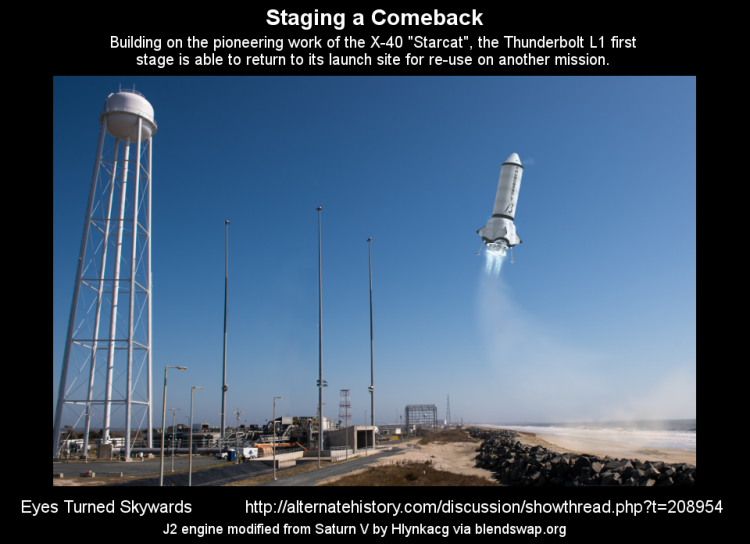Blue Origin was actively working on it before SX did, they had plans for VTVL launchers (picture below from 2011) while SX was still experimenting with parachute recovery, and the earliest trace of a recognisible New Glenn was in 2012, I'm fairly convinced they would have, Gradatim Ferociter in their own way, made a VTVL reusable launch vehicle in the 2020s. Unsure if Bezos would have been visionary enough to make Kuiper without the exemple of Starlink, and such launcher would probably not have been as large as New Glenn
Oh, it's not impossible. And I remember a space timeline on this site that played convincingly with that very idea, in fact....
But I do think a scenario like that was an unlikely one, with any POD in the 60's or 70's, let alone later. Otherwise, with any reasonably plausible POD, the most likely outcome is that it becomes a real thing sometime in the mid-21st century. Other points earlier (and later!) are still possible, but less likely.
But as for my original comment you responded to, I meant even less than this. My assumed point of departure was the moment Elon Musk committed to making retropropulsive recovery work, and stick as the operational paradigm for all of his launch vehicles. At that point, I really do not think it was in the cards for at least another generation.
Really wonder if a continued USSR wouldn't be quite beneficial for all these programs.All this remains....incredibly off-topic for this thread, but I would point out there were like two or three near-run RLV programs in the 90s, which only a few butterflies are needed to get to succeed. X-33 probably would have worked if they hadn't sat down and made a list of every possible boneheaded decisions from the wrong shape to the wrong engines to the wrong tank materials and so on, and it still almost flew. X-34 was perpetually "always the bridesmaid" as a result, and it was only cancelled because of an ill-timed funding crunch and fallout on other RLV programs from X-33. Minor butterflies, and that demonstrated HTHL rapid reuse of a first-stage-like vehicle. The less said about the folder of images I have of "all the parts for Kistler's rockets spread out in factories and starting to be assembled for flight" (literally being assembled, argh) the better for my sanity. Even without getting into longer-shot stuff like Roton or any of that, the number of "almosts" in RLVs make me think it's as likely to happen well before OTL as well after F9.
It could also have happened concurrently with F9, it's often forgotten now, because it was entirely overshadowed by F9, but Flyback boosters were "trendy" back in the early-mid 2010s, the DARPA XS-1 failed in large part because of Boeing, and could have gone better under another contractor (Masten?), but the XS-1 also had deeper roots back to its announcement in 2013 as well as the Lockheed-USAF Reusable Booster System from 2010-2012.
The particularity is that the Russians (under MRKS) and especially the chinese (under also the name RBS) were interested in the same flyback boosters at the same time, the latter were notable since it was at the same time that they were doing drop test and suborbital tests of the Shenlong/Proto-current-chinese-X37;
So I think it's quite possible to have a situation where an XS-1 flies, and a some months or a year later a similar-looking flyback booster launches from Jiuquan in an alternate early 2020s without SpaceX.
I wonder if Orbital Science still exists in TTL?
Last edited: